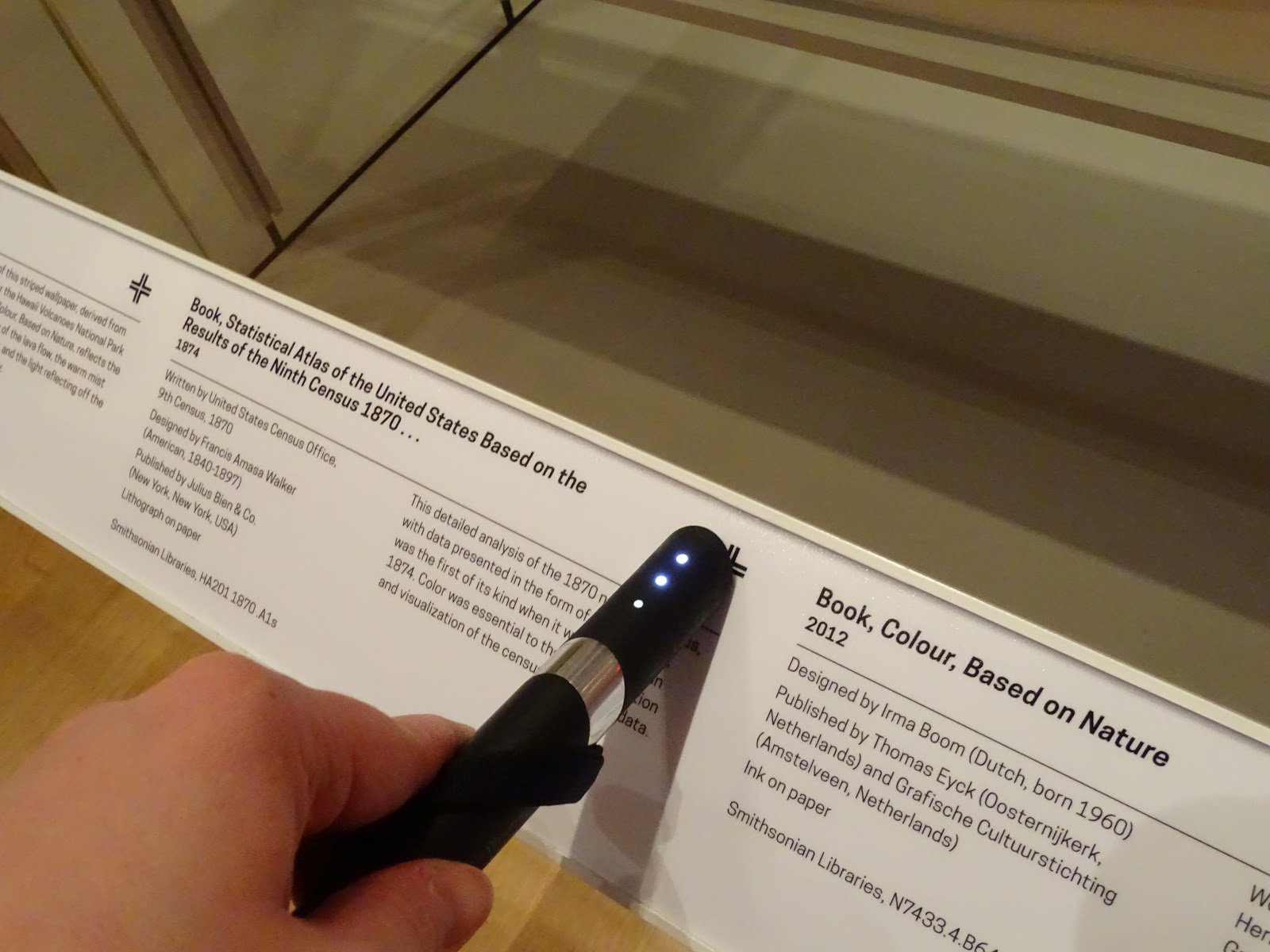When the Cooper Hewitt Museum reinstalled their galleries in 2014, their priority was to provide access to their physical and digital collections, which number more than 200,000 objects. Allowing visitors to interpret an exhibition in their own ways creates a unique and personal experience for every individual. Letting visitors engage with an exhibition and understand the collection on their own terms can offer much more meaningful museum experiences.

But how could a museum allow visitors to navigate and engage with exhibits and their digital collection at the same time? The Cooper Hewitt invented the Pen and Interactive Tables as tools to help visitors navigate the museum and learn about the collections. With the Pen, visitors can “collect” and save objects they find in exhibitions and then revisit those saved or “collected” objects when they return home using a code on their museum ticket.
The Cooper Hewitt also wanted to increase public access to the collection. At the Interactive Tables found throughout the museum, a river of objects floats in the center. Using the Pen or a finger tip, objects can be dragged to a home base and the display expanded for more information. Visitors can recall items saved on the Pen to the Interactive Table to learn and play with color and pattern with “design it” elements built into the table. Visitors can use the Pen tip to draw on the interactive tables and then save those designs.
 This technology empowers the visitor to interpret the collection and exhibitions on their own terms and curate their own experiences. It is a great tool for tourists, or first time visitors to explore the scope of the collection and to save and share what they liked. Yet, it is also a resource for researchers and designers to return to over and over again and have a different interaction each time.
This technology empowers the visitor to interpret the collection and exhibitions on their own terms and curate their own experiences. It is a great tool for tourists, or first time visitors to explore the scope of the collection and to save and share what they liked. Yet, it is also a resource for researchers and designers to return to over and over again and have a different interaction each time.
During my visit to Cooper Hewitt, I spoke with Adam Quinn, Digital Product Manager, who shared the history of this technology as well as its the future. “A lot of your experience in the museum revolves around the Pen,” Adam told me. It’s been four years since the Pen debuted, so what’s next for digital engagement at Cooper Hewitt? Adam said that the museum team is always looking at what they’re going to do next, what the ideal visitor interaction should be and learning what people love about the museum now. The Pen is iconic to the Cooper Hewitt, but what else can or should the museum do to further enhance a visitor’s experience during and after their visit?
Opened in 2014, the Immersion Room is a major feature of this interactive and immersive use of its collections, in this case of digitized images of wallpapers, originally collected by the Hewitt sisters, and is one of the most exciting spaces in the museum. In the Immersion Room, visitors can view the digital wallpaper collection using an Interactive Table highlighting wallpaper patterns. Adam described that using the Interactive Table and Pen in the Immersion Room lets you not only explore the wallpaper collection, but manipulate digitized images and become a wallpaper designer in your own way. 
It is a completely interactive space and with the large projections on two of the walls, you can transport yourself into the design. “The room is designed to reach a wide audience and allow interactions that are interesting to a lot of different people for a lot of different reasons,” Adam said. The technology appeals to multiple targeted audiences -- tourists and first time visitors, museum members who are designers, and kids. The Immersion Room’s intuitive interface appeals to multiple audiences and allows visitors to go as deep into the collection or design learning and experimentation as desired. That can mean just drawing a wallpaper design, seeing it projected onto the walls, taking a picture with your cell phone, or a designer using the room to explore the collection for research and inspiration.

Moreover, beyond the specialized experience that the Pen and the Immersion Room can offer to visitors, the digital image technology also creates an organic promotion for the museum. The Pen is designed to allow visitors to save their favorite collection items, “bring” them home with them, and share their museum experience. They can also share with their friends or the world, via social media. Scrolling through the #immersionroom on Instagram, or visiting the tagged photos on the Cooper Hewitt’s Instagram page, there are hundreds of visitor self photos engaging with their wall paper designs that generate a lot of engagement in likes and comments.
Cooper Hewitt isn’t fearful that by making their digital collection accessible that they are losing control of their content or even a possible revenue source. Their priority is making their collection as accessible as possible.
The final phase of a visitor’s experience at Cooper Hewitt is after they’ve left the museum. Cooper Hewitt calls this the “post-visit experience.” By prioritizing access to the collection, Cooper Hewitt lets visitors relive their museum visit long after they’ve left. This unique and personal approach to exhibition interpretation creates a connect between the museum and its visitors and allows the visitors to shape their museum experience.

@cooperhewit Instagram feed #immersionroom
